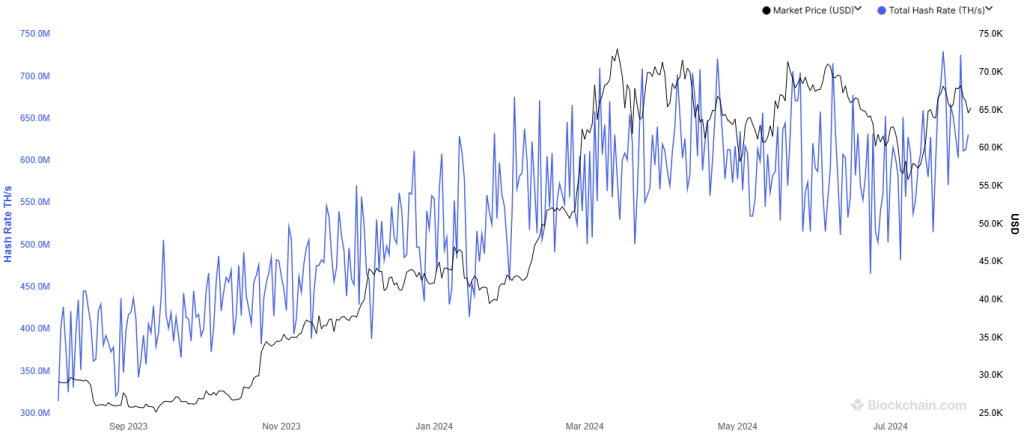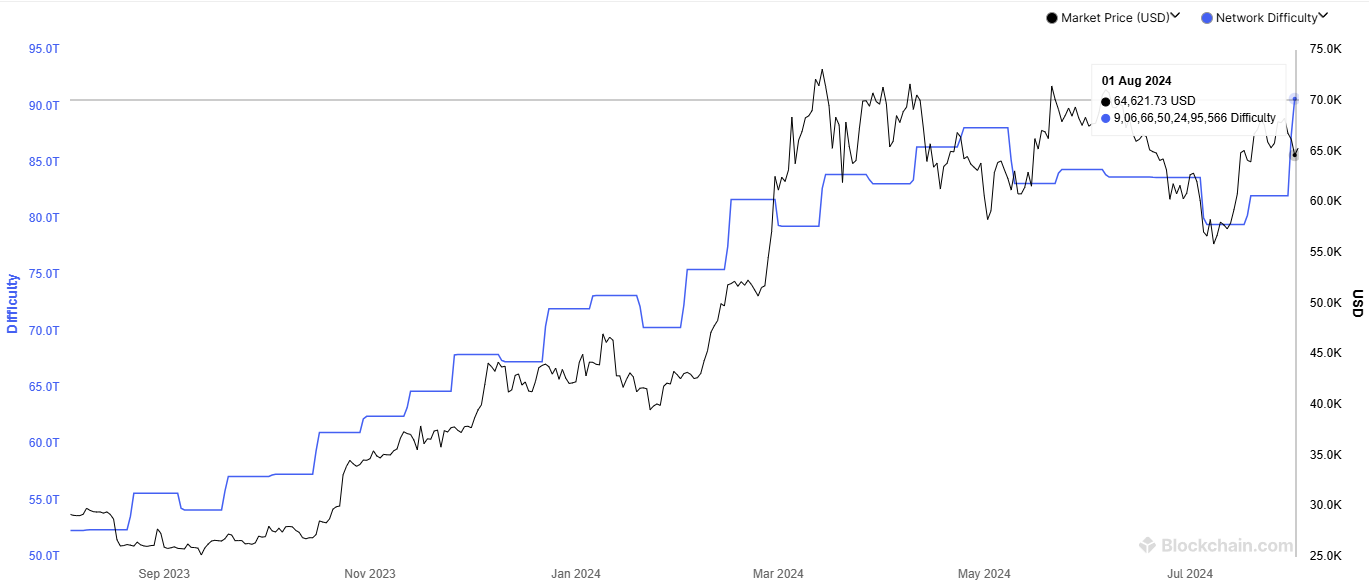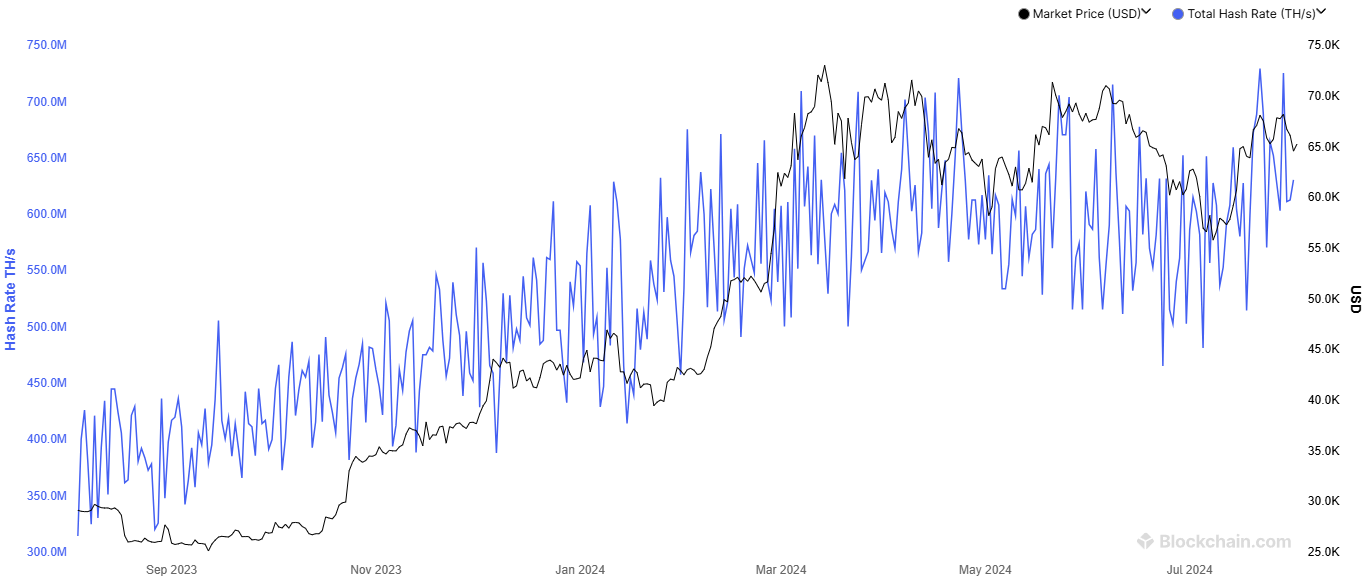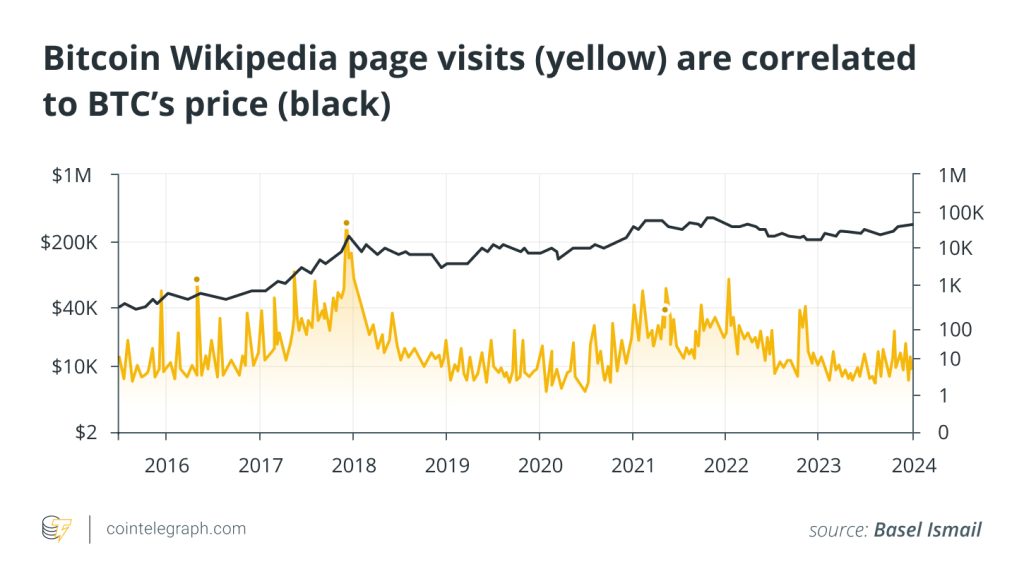Bitcoin network difficulty breaks 3-month downtrend to mark new ATH

Bitcoin’s network difficulty rose by over 10.5% on Aug. 1, 2024, breaking a three-month-long downward streak to mark a new all-time high.

The difficulty to create a new block on the Bitcoin blockchain increased by over 10.5% on Aug. 1, adding pressure to the rising operational costs related to Bitcoin mining.
For nearly three months, between May 9 and July 30, Bitcoin’s network difficulty witnessed a significant decline, effectively reducing the computational power required to confirm Bitcoin (BTC) transactions on the blockchain.
While a higher network difficulty demands higher computational power for processing Bitcoin transactions, it effectively secures the network against external attacks.

As a result of lower hashrate combined with infrastructure upgrades, several Bitcoin miners — including Bitfarms — recorded higher monthly earrings in July compared to previous months.
However, the network difficulty shot up on July 31 and eventually marked a new all-time high on Aug. 1 at 90.66 trillion. The difficulty increased by 14%, which is positioned to negatively impact miners’ earnings in the near future.
Check out this Cointelegraph guide to learn more about how to mine Bitcoin from home.

On the other hand, the Bitcoin network has maintained its hashrate metric for nearly six months at 630 exahashes per second. The hashrate is another security metric determined by the total number of mined blocks and the relative network difficulty.
Related: CleanSpark’s mining expansion continues with Wyoming facilities
Amid growing financial pressure, Bitcoin mining firms are currently holding on to the BTC rewards in hopes of selling it for a bigger profit in the near future.
Cointelegraph previously spoke to Salman Khan, Marathon’s chief financial officer, to better understand how miners decide when to accumulate their Bitcoin and when to move them onto the market. Khan explained:
“There are market dynamics that you have to consider […] in the short term, the Bitcoin price could fluctuate, and your decision could be impacted as a result of that.”
Marathon currently holds 18,536 Bitcoin worth over $1 billion, up 48% from its 2023 holdings of 12,538.






Responses